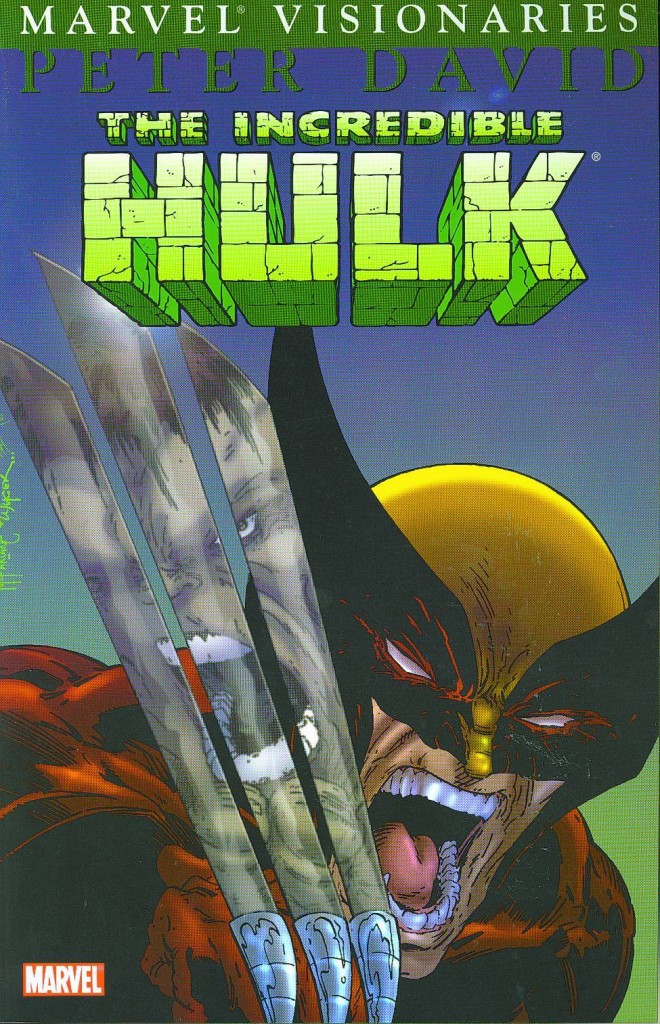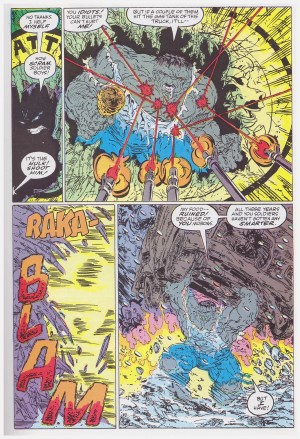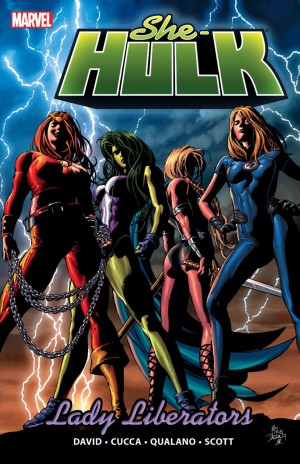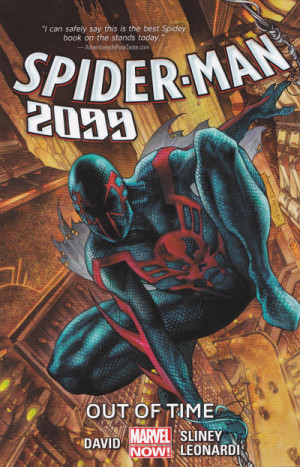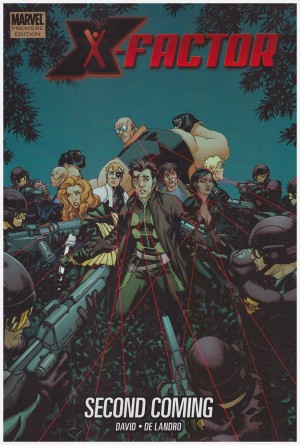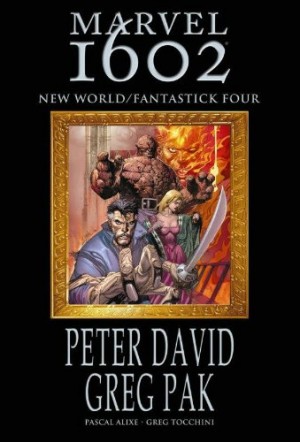Review by Karl Verhoven
By the end of this book Peter David had been writing the Hulk for eighteen months, and had twice completely refreshed the feature. The first was restoring the absolute earliest version of the Hulk, coloured grey and with a considerably greater intelligence than his more familiar green incarnation. This was seen in Volume 1 of the Peter David Hulk Visionaries graphic novels. The next change occurs towards the end of this selection following a bruising encounter with old foe the Leader, nicely redesigned by artist Todd McFarlane.
McFarlane’s Spider-Man work may be better known, but it was his art for the Incredible Hulk that detailed his progression from a competent artist with a lack of individuality into the commercial force he became. This was by developing a style of his own, edging from naturalism into cartooning, exaggerating the Hulk to a greater level than previously, and defining everything with far more lines. His layouts also became more refined, and David responded accordingly reducing his word count considerably to let images tell the story more frequently. McFarlane’s gone before the end of the book, providing layouts for Erik Larsen to see out the Leader’s master plan, but his legacy was assured.
That David still isn’t entirely comfortable with the Hulk series is apparent from encounters with Wolverine and Man-Bull that only occasionally spark into life, but his subsequent plot involving the Leader and Betty Banner is far more characteristic of David’s later drive on the series. It’s an emotionally charged, fast-paced and tense thriller, previously released as Ground Zero, with greater detail found under that review. When the dust clears the Leader is still at large, his greater plan apparently a success, and he’ll be seen again a few volumes down the line. The Hulk, however, has disappeared, and a good closing chapter to the story relies on his friends and allies relating how he’s changed their lives. It’s a novel method of looking at what might have been.
The final two chapters here are illustrated by the art team of Jeff Purves and Mike Gustovich, at the time not very well received after McFarlane’s increasingly stylised dynamism. The Hulk might be lost, but there’s rather a bulky grey character turned up in Las Vegas. Wearing a pinstripe suit, he’s known as Mr Fixit, and has rapidly become a feared enforcer for casino owner Michael Berengetti.
David sets up the big reveal well, introduces a seemingly short-lived character who’ll actually have a significant part to play in the next several volumes and thereafter in other series, and imprints the background professionally. There’s no attempt to deceive, and rapidly after his introduction Mr Fixit’s monologuing about how he’s successfully suppressed Banner. There’s a nice sense of inevitability set up when an over-confident Absorbing Man comes calling. “The day I can’t handle some cheap-jack Vegas leg-breaker is the day I pack it in”, he boasts. Oops.
It’s fun, and difficult to understand why it wasn’t wholeheartedly embraced at the time. Purves isn’t McFarlane, but neither was McFarlane on his earliest Hulk outings, and if Purves’ pages are a little crowded, they don’t pull their punches. He’s around for Volume 3.
David’s first four Visionaries collections are combined as The Incredible Hulk by Peter David Omnibus Vol. 1.
